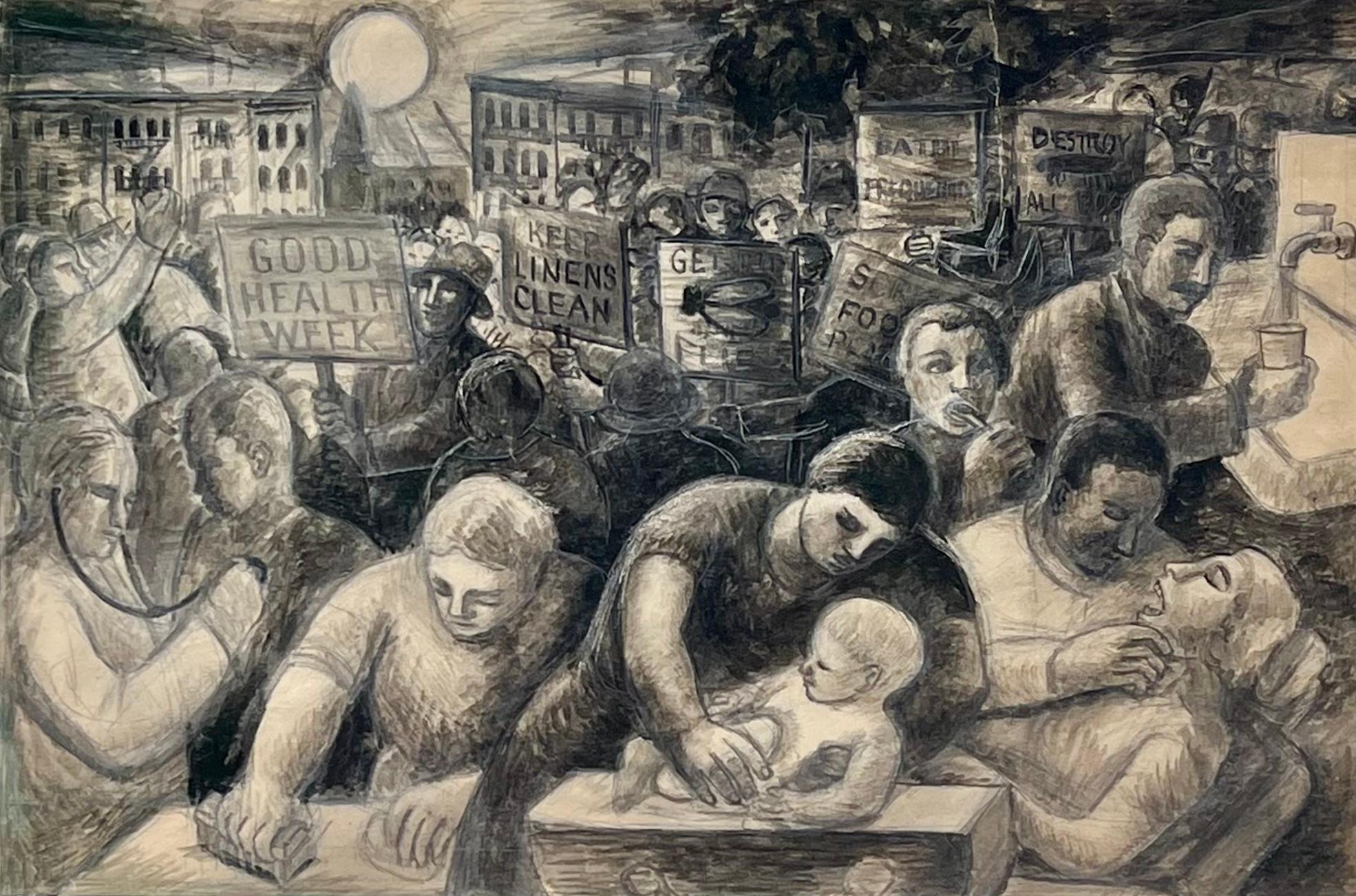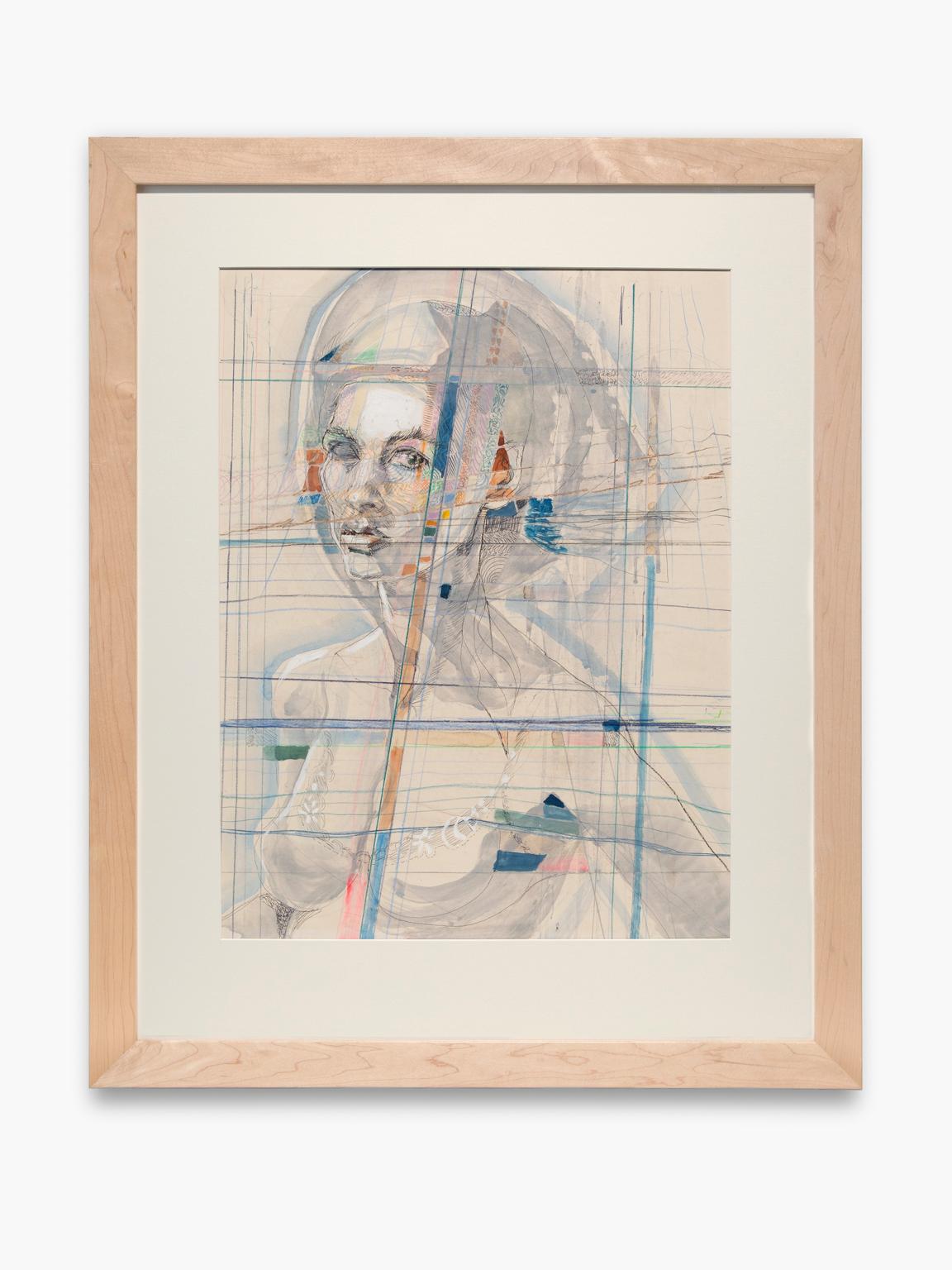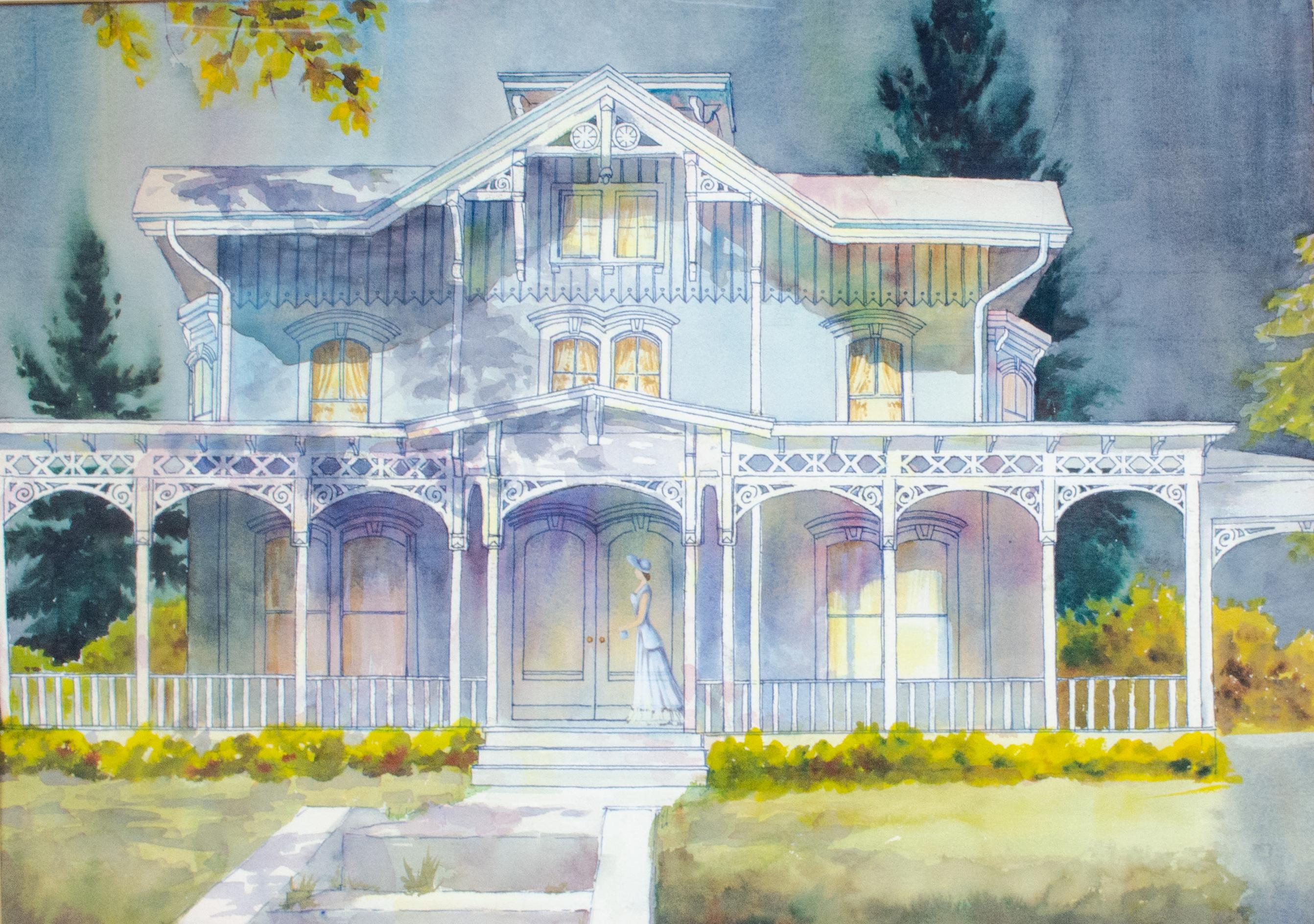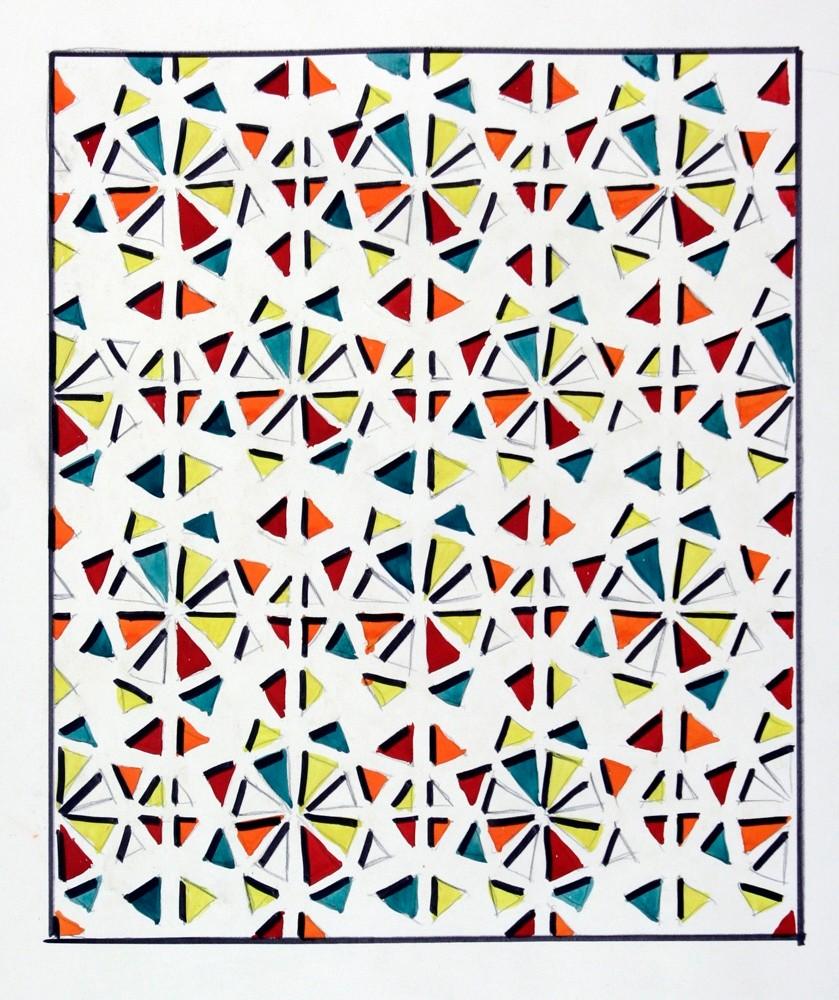Items Similar to Untitled (Sunset with Hands)
Want more images or videos?
Request additional images or videos from the seller
1 of 8
Louisa ChaseUntitled (Sunset with Hands) 1984
1984
About the Item
Signed (at lower right): Louisa Chase
- Creator:Louisa Chase (1951 - 2016, American)
- Creation Year:1984
- Dimensions:Height: 14.2 in (36.07 cm)Width: 10.25 in (26.04 cm)Depth: 1.5 in (3.81 cm)
- Medium:
- Movement & Style:
- Period:
- Condition:
- Gallery Location:New York, NY
- Reference Number:
About the Seller
5.0
Recognized Seller
These prestigious sellers are industry leaders and represent the highest echelon for item quality and design.
Established in 1952
1stDibs seller since 2010
32 sales on 1stDibs
Typical response time: 10 hours
Associations
Art Dealers Association of America
- ShippingRetrieving quote...Ships From: New York, NY
- Return PolicyThis item cannot be returned.
More From This SellerView All
- UntitledBy Louisa ChaseLocated in New York, NYSigned (at lower right): Louisa ChaseCategory
Late 20th Century American Modern Abstract Drawings and Watercolors
MaterialsCharcoal, Ink, Watercolor, Pencil
- UntitledBy Louisa ChaseLocated in New York, NYSigned (at lower right): Louisa Chase 1989Category
Late 20th Century American Modern Abstract Drawings and Watercolors
MaterialsCharcoal, Ink, Watercolor, Pencil
- UntitledBy Charles Houghton HowardLocated in New York, NYCharles Houghton Howard was born in Montclair, New Jersey, the third of five children in a cultured and educated family with roots going back to the Massachusetts Bay colony. His fat...Category
20th Century American Modern Abstract Drawings and Watercolors
MaterialsPaper, Gouache, Graphite
- Garden FlowersBy Charles DemuthLocated in New York, NYCharles Demuth was one of the most complex, talented, and deeply sensitive artists of the American modern period. Whether he was painting floral still lifes, industrial landscapes, or Turkish bathhouses, art was, for Demuth, fraught with personal meaning. A fixture of the vanguard art scene in New York, Demuth navigated the currents of Modernism, producing some of the most exquisite watercolors and original oil paintings in twentieth-century American art. Demuth was born in Lancaster, Pennsylvania, the only child of a well-to-do family. He had an awkward and introverted childhood shaped by a childhood illness, Perthes, a disease of the hip that not only left him permanently lame, but, as part of the “cure,” bedridden for two years in the care of his mother. This long period of incapacitation had a deep impact on Demuth, who came to see himself as an invalid, an outsider who was different from everyone else. It was perhaps during this period of indoor confinement that his keen interest in art developed. Several relatives on his father’s side had been amateur artists, and, following his convalescence, his mother encouraged his artistic pursuits by sending him to a local painter for instruction. The majority of his early pictures are of flowers, a subject for which Demuth maintained a lifelong passion. Following high school, Demuth enrolled at the Drexel Institute of Art in Philadelphia, a school renowned for its commercial arts program. He advanced through the program rapidly, and, in 1905, at the encouragement of his instructors, he began taking courses at the Pennsylvania Academy of the Fine Arts. The two leading teachers then at the Academy were William Merritt Chase and Thomas Anshutz. Anshutz, himself a former student of Thomas Eakins, was well liked by his students, and is best known as the teacher of Robert Henri, John Sloan, and several of the other artists of the Ashcan School. Demuth, too, adopted a similar idiom, working in a controlled, realistic manner while at the Academy, where he remained until 1910. In 1907, Demuth made his first trip to Europe, staying in Paris. He spent time on the periphery of the art scene composed of the numerous American artists there, including John Marin and Edward Steichen. He returned to Philadelphia five months later, and immediately resumed courses at the Academy. Despite his introduction to advanced modern styles in Europe, Demuth’s work of this period retains the academic style he practiced before the trip. It wasn’t until he had summered at New Hope, Pennsylvania, in 1908 and 1911, that his style began to evolve. New Hope was a prominent American Impressionist art colony whose members were largely affiliated with the Pennsylvania Academy. Demuth dropped the conservative tone of his style and adopted a freer and more colorful palette. Although he remained based in Philadelphia, Demuth frequently went to New York during this period. Many of the same American artists of the Parisian art scene Demuth had encountered on his earlier European trip now formed the nucleus of New York’s avant-garde, which centered around Alfred Stieglitz’s 291 gallery. It wasn’t long before Demuth began to apply modernist-inspired strategies to his work. He was particularly influenced by the watercolor work of John Marin, also a former student of Anshutz, whose bold use of color in the medium Demuth freely adapted into looser washes of color. In 1912, Demuth again left for Paris, this time studying in the Académie Moderne, Académie Colorossi, and Académie Julian. In Paris Demuth met the American modernist Marsden Hartley. Hartley, a principal figure in the expatriate art circle, acted as a mentor to Demuth, and introduced him to the wide array of modern styles currently practiced in Europe. Hartley also introduced Demuth to many of the members of the Parisian avant-garde, including Gertrude Stein. Demuth was an aspiring writer, and he spent many hours in conversation with Stein. He wrote extensively during this period, and published two works shortly after his return to America. He also developed an interest in illustrating scenes from literary texts. From 1914 to 1919, Demuth produced a series of watercolors of scenes from books such as Emile Zola’s Nana and Henry James’s The Turn of the Screw. Upon his return to America, Demuth settled in New York. In 1914, Demuth had his first one-man show at Charles Daniel’s gallery, which promoted emerging modern American artists, including Man Ray, Rockwell Kent, Yasuo Kuniyoshi, Stuart Davis, and Max Weber. Demuth drew closer to the artistic vanguard in New York, becoming friends with many in the Stieglitz and Daniel circles, including Georgia O’Keeffe, Marcel Duchamp, Carl Van Vechten, and Edward Fiske. New York’s cosmopolitan atmosphere and active nightlife appealed greatly to Demuth. In a sketchy style well suited to watercolor, he painted many vaudeville and circus themes, as well as nightclub, café, and bathhouse scenes. Often with Duchamp, Demuth took part in an urban subculture replete with nightclubs, bars, drugs, and sexual permissiveness, which, for a homosexual artist like himself, allowed room for previously unattainable personal expression. Demuth’s pictures of sailors, bathhouses, and circus performers embody a sensual and sexual undercurrent, expressing the artist’s sense of comfort and belonging in the bohemian subculture of New York. Simultaneously, Demuth deepened his interest in floral pictures, painting these almost exclusively in watercolor. His style evolved from the broad color washes of his earlier pictures to more spare, flattened, and sinuous compositions, inspired by the drawings of Aubrey Beardsley and other artists of the Aesthetic Movement. Demuth’s flower watercolors are moody and atmospheric, sensuous and elegant, introspective and yet full of expressive power. Moreover they are beautiful, and are unequivocally among the finest still lifes in American art. Despite numerous subsequent artistic undertakings that led him in a variety of directions, Demuth never stopped painting flower pictures, ultimately adding fruits and other still-life objects to his repertoire. In 1916, Demuth began to develop a style later known as Precisionism, a form of landscape painting infused with Cubism, in which space is divided into precisely drawn geometric regions of color. Demuth first began to paint the landscape in an appropriated Cubist mode while on a trip with Hartley to Bermuda. In these early landscapes, in which the curvilinear forms of trees intersect the geometrically articulated architectural forms, Demuth explored ideas that shaped the future development of modernism in America. The full realization of Demuth’s explorations came after his return to America in 1917, when he turned his attention to industrial subjects. These works derive from a “machine aesthetic,” espoused by New York artists such as Francis Picabia, Joseph Stella, Albert Gleizes, and Duchamp, by which artists viewed machines as embodying mystical, almost religious significance as symbols of the modern world. Rather than painting the skyscrapers and bridges of New York as did most of his like-minded contemporaries, Demuth returned to his home town of Lancaster, where he painted factories and warehouses in a Precisionist idiom. The titles for these pictures are often contain literary references, which serve as clues for the viewer to aid in the decoding of the artist’s meaning. In 1923, Demuth planned a series of abstract “poster portraits” of his friends and contemporaries in the New York art and literary scene. In these “portraits,” Demuth combined text and symbolic elements to evoke the essential nature of his sitters’ distinguishing characteristics. In this fashion, he painted portraits of such artists as Georgia O’Keeffe, John Marin, and Arthur Dove. His most famous poster portrait, I Saw the Figure 5 in Gold...Category
20th Century American Modern Still-life Drawings and Watercolors
MaterialsPaper, Watercolor
- UntitledBy Charles Houghton HowardLocated in New York, NYCharles Houghton Howard was born in Montclair, New Jersey, the third of five children in a cultured and educated family with roots going back to the Massachusetts Bay colony. His fat...Category
20th Century American Modern Abstract Drawings and Watercolors
MaterialsPaper, Watercolor, Gouache, Graphite
- Untitled [Abstraction]By George L.K. MorrisLocated in New York, NYGouache on paper, 18 7/8 x 14 3/4 in. Signed (at lower right): Morris; (with monogram, on the back): GLKM [monogram] / 1932 [sic] Executed circa late 1940s A passionate advocate of abstract art during the 1930s and 1940s, George L. K. Morris was active as a painter, sculptor, editor, and critic. An erudite man with an internationalist point of view, Morris eschewed the social, political, and figural concerns that preoccupied so many artists of Depression-era America, believing that painters should focus their attention on the beauty, refinement, and simplicity of pure form instead. His goal, he said, was “to wedge the expression further and further into the confines of the canvas until every shape takes on a spatial meaning” (as quoted in Ward Jackson, “George L. K. Morris: Forty Years of Abstract Art,” Art Journal 32 [Winter 1972–73], p. 150). Born into an affluent family in New York City, Morris was a descendent of General Lewis Morris, a signer of the Declaration of Independence. From 1918 until 1924, he attended the Groton School in Connecticut, studying classics and art. He continued to focus on literature and art while attending Yale University (1924–28), an experience that prepared him well for his future activity as an artist-critic. After graduating in 1928, Morris studied at the Art Students League of New York, working under the realist painters John Sloan and Kenneth Hayes Miller, as well as Jan Matulka, the only modernist on the faculty. In the spring of 1929, Morris traveled to Paris with Albert E. Gallatin, a family friend and fellow painter who introduced him to leading members of the Parisian avant-garde, including Jean Arp, Pablo Picasso, Georges Braque, Jean Hélion, and Piet Mondrian. Morris also took classes at the Académie Moderne, studying under Fernand Léger and Amédée Ozenfant, important exponents of Synthetic Cubism who influenced his aesthetic development. Indeed, after experimenting with the simplified forms of Modernism for a few years, Morris moved on to abstraction by 1934, adopting a hard-edged, geometric approach inspired by Leger’s cubist style and the biomorphic shapes of Arp and Joan Miró. Following his return to New York in 1930, Morris built a white-walled, open-spaced studio (inspired by that of Ozenfant, which had been designed by Le Corbusier) on the grounds of Brockhurst, his parents’ 46-acre estate in Lenox, Massachusetts. In 1935, he married the painter and collagist Estelle “Suzy...Category
1940s American Modern Abstract Paintings
MaterialsPaper, Gouache
You May Also Like
- "Good Health Week" American Scene Modern Social Realism Double Sided WPA EraBy Jo CainLocated in New York, NY"Good Health Week" American Scene Modern Social Realism Double Sided WPA Era Jo Cain (1904 - 2003) Good Health Week – double sided 13 3/4 x 20 1/2 in...Category
1930s American Modern Figurative Drawings and Watercolors
MaterialsGouache, Paper, Ink
- Horse and TreeBy Robert Noel BlairLocated in Buffalo, NYYou are viewing a modernist American watercolor painting by Robert Noel Blair Robert Noel Blair (American, 1912-2003) was an American artist, painter, sculptor, printmaker and te...Category
1960s American Modern Abstract Drawings and Watercolors
MaterialsArchival Ink, Paper, Watercolor
- "Spiritual Self-Portrait" Watercolor, Ink, Portrait, Nude, Linear Grid, ColorsBy Artis LaneLocated in Detroit, MI"Spiritual Self-Portrait" is a portrait of the artist by the artist. She has presented herself nude gazing boldly and directly at the viewer not so much challenging, but inviting dia...Category
Late 20th Century American Modern Portrait Drawings and Watercolors
MaterialsPaper, Ink, Watercolor
- Charming Watercolor of a Southern HomeLocated in Larchmont, NYUnknown Artist Untitled (Country Home), 20th Century Watercolor and ink on paper 21 x 29 in. Framed: 28 1/4 x 36 1/16 x 3/4 in.Category
20th Century American Modern Figurative Drawings and Watercolors
MaterialsPaper, Ink, Watercolor
- Textile DesignBy Andre DelfauLocated in Chicago, ILA colorful textile design (with blue, green, yellow & red tones) by notable set and costume designer Andre Delfau. Born in Paris, France in 1914, Andre Delfau became an internationally acclaimed stage, set and costume designer who worked world-wide from the 1930s to the 1980s. Delfau was a life long artist and painted independently of his noted design career. His artwork is recognized for it’s vibrant color and form, and a particularly keen use of line. He was highly influenced by the French Modern trends of Cubism and Surrealism, and his artwork is often infused with a dramatic sense of architecture and perspective. Delfau created fashion designs for such major Paris couture houses as Balmain, Jean Patou and Balenciaga. He completed noteworthy set designs and costumes for numerous international operatic and ballet productions, including those at the Royal Danish Ballet, the Royal Ballet of Great Britain, the Paris Opera, the Dance Theater of Harlem, the Ruth Page International Ballet, the Civic Ballet of Chicago, the Chicago Opera Ballet and the Lyric Opera of Chicago, among others. Most notably, Delfau designed the elaborate stage sets and costumes for the 1986 PBS television production of the Viennese operetta, "Die Fledermaus...Category
1950s American Modern Abstract Drawings and Watercolors
MaterialsInk, Gouache, Graphite
- Textile DesignBy Andre DelfauLocated in Chicago, ILA colorful 1950s textile design (Black, yellow, blue, pink, red tones) by noted set and costume designer Andre Delfau. Born in Paris, France in 1914, Andre Delfau became an internationally acclaimed stage, set and costume designer who worked world-wide from the 1930s to the 1980s. Delfau was a life long artist and painted independently of his noted design career. His artwork is recognized for it’s vibrant color and form, and a particularly keen use of line. He was highly influenced by the French Modern trends of Cubism and Surrealism, and his artwork is often infused with a dramatic sense of architecture and perspective. Delfau created fashion designs for such major Paris couture houses as Balmain, Jean Patou and Balenciaga. He completed noteworthy set designs and costumes for numerous international operatic and ballet productions, including those at the Royal Danish Ballet, the Royal Ballet of Great Britain, the Paris Opera, the Dance Theater of Harlem, the Ruth Page International Ballet, the Civic Ballet of Chicago, the Chicago Opera Ballet and the Lyric Opera of Chicago, among others. Most notably, Delfau designed the elaborate stage sets and costumes for the 1986 PBS television production of the Viennese operetta, "Die Fledermaus...Category
1950s American Modern Abstract Drawings and Watercolors
MaterialsInk, Gouache, Graphite
Recently Viewed
View AllMore Ways To Browse
Modern Sunset
Modern Chase
Vintage Sunset Art
Retro Sunset Art
Retro Sunset Painting
New England Watercolor
Antique Watercolor Portrait
Nude Painting Beige
Watercolor Of Room
Pink Watercolor
Antique Watercolours
Paper Used For Charcoal Drawing
California Watercolor School
Nude Figure Drawing
Antique Watercolor Portrait Paintings
Africa Watercolor
African Watercolor
Sketches In Ink




